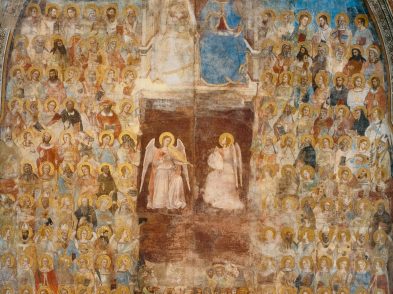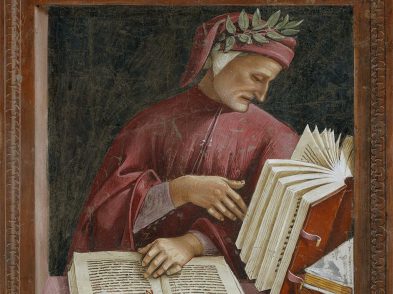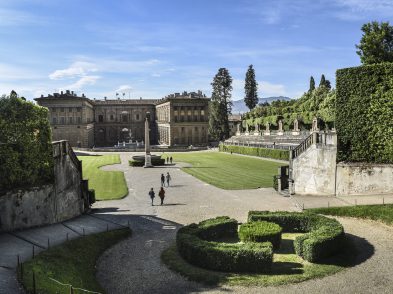Here’s a question for you: when was the last time you visited the Museo degli Argenti at Palazzo Pitti? I confess that I had not been since my long-ago student days, when the collection of jewels, crystals, cameos, semiprecious stones, ivories and, of course, silver, had paled in comparison to the heady, quotidian mix of Botticelli, Leonardo and Michelangelo around town.
However, perhaps more than any museum in Florence, it is the Museo degli Argenti that exemplifies the sumptuous lifestyle of the sixteenth- and seventeenth-century Medici princes. The museum itself is housed on the north side of the massive courtyard, in what were the state rooms and summer residence of the grand dukes.
Though the collection originated with Cosimo il Vecchio, Piero and Lorenzo il Magnifico in the 1400s, it was Grand Duke Cosimo I who took it to new heights during the following century. In fact, part of Cosimo I’s famous ‘cultural policy’ was aimed at protecting artists through commissions of precious artisanal objects; his descendants continued the practice, even formalizing it with the creation of the Opificio delle Pietre Dure in 1588. Each object testifies to the power of the Medici: jewels sent as gifts by other powerful kingdoms in Europe, a collection of precious cameos, spoils of war and the silvers of the Salzburg treasure for which the museum is named. This is the place to go to fully comprehend the opulent nature of Medici tastes, see the magnificent trompe l’oeil frescos on the ground-floor rooms, and take a firsthand look at some of Europe’s finest virtuoso craftsmanship.
I made my recent visit in the company of Bettina Schindler (see TF 128), an expert in restoring ivory who intimately knows the history-and the science-behind each piece in the collection. Our mission was to examine four pieces she had restored in 2005 in a project financed by Friends of Florence; Christine Gilberti, a member of the organizations’ advisory board, sponsored the restoration.
Interestingly, though it was common for artists to depict classical or religious subjects when working in ivory, the Museo degli Argenti collection has several intriguing, atypical subjects that merit particular attention. Take, for example, the carvings of the Furienmeister (‘Master of Furies’), a German carver whose name is unknown though we know he worked in Florence, Vienna and perhaps Dresden around 1600. Although the presence of northern artists, especially Flemish and German was quite common at the seventeenth-century Medici court, it is said that the Furienmeister was an outsider who was not financed by the court, but who moved around, procuring pieces of ivory where he could.
The Master of Furies’ Pet Dog (early sixteenth century) is one of the pieces that Bettina restored for the Friends of Florence project-though the artist who did the work was still unknown at the time of restoration. Commissioned by Grand Duke Cosimo II as a gift to his wife, Maria Maddalena of Austria, it depicts a cavalier King Charles spaniel, a personal favorite of the duchess, who adored dogs and kept several of them at their Poggio Imperiale villa. The artist’s incredible attention to the smallest details-natural-looking tendrils, paws poised for a good clawing and an arrogant stare-ensure that this is not just another rendering of a cuddly court lapdog.
Pet Dog was attributed to the Master of Furies in 2005, when Bettina Schmitt, curator of an exhibition on the artist at the Liebieghaus Museum in Frankfurt, noted the similarities between the dog’s hair and the hair of the mane of the horse in Marcus Curtius, another masterpiece by the Master of Furies. The detail in the latter work, which depicts the courageous Roman soldier in the moment before throwing himself into a chasm as a sacrifice, has the strength and command of a marble monument.
No less precious are the three other pieces restored during the Friends of Florence project. The Hermaphroditus, possibly by German artist Justus Glesker is a sensual rendition of the half female/half male child of Hermes and Aphrodite. Also by Glesker is the Putto with Straw, a sturdy toddler with his chubby cheeks puffed with air as he blows soap bubbles at the ground below. Intricacy abounds in the Reggio Madonna-a praying mother and (mostly) attentive Christ Child sitting on a cluster of clouds.
As stunning as the collection is, with an expert beside me I could see that many of the works are fragile. There are numerous other ivories in need of restoration at the Museo degli Argenti.
Contact info@friendsofflorence.org for sponsorship information.
MUSEO DEGLI ARGENTI, Palazzo Pitti Tel. 055/2388709
Winter hours (November-March):Daily from 8:15am to 4:30pm.
Closed the first and last Monday of the month, Christmas and New Year’s Day.
For more on Friends of Florence and their role in preserving cultural heritage, visit their stand at the Salone dell’Arte e Restauro from November 11 to 13 at the Stazione Leopolda. For more information on ivory restoration, see the short book Ivory: Technique and Materials by Bettina Schindler and Paola Candeloro (Sillabe, €4.50).








